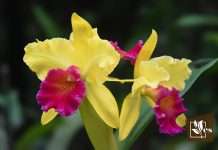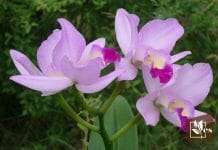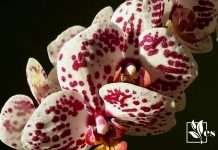- When to Plant Corn in San Diego: Optimal Seasons and Tips - July 19, 2024
- When to Plant Hydrangeas in Illinois: Best Timing for Optimal Growth - July 19, 2024
- Why Are My Radishes Growing Above Ground: Uncovering the Causes - July 19, 2024
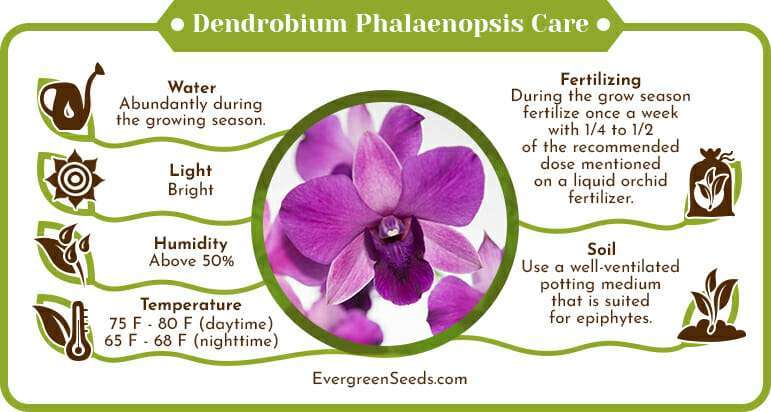 Dendrobium Phalaenopsis of the Orchidaceae family is an evergreen orchid, meaning that it is not deciduous and has continuous growth throughout the year. It is one of the easiest to grow plants belonging to the Phalaenopsis orchid genus.
Dendrobium Phalaenopsis of the Orchidaceae family is an evergreen orchid, meaning that it is not deciduous and has continuous growth throughout the year. It is one of the easiest to grow plants belonging to the Phalaenopsis orchid genus.
Learn from this ultimate grow and care guide to know how to care for this lovely orchid.
JUMP TO TOPIC
What Is Dendrobium Phalaenopsis?
Dendrobium Phalaenopsis is a robust and resilient epiphytic orchid. Some of its ancestors are lithophytes too. It has large, white flowers like the Moth orchids, which is why it is called Dendrobium “Phalaenopsis.”
This orchid comes majorly in white and pink flowers. But there is one variety which has blue flowers, the Blue Phalaenopsis orchid.
– Size and Growth
Interestingly, the Dendrobium Phalaenopsis orchid is not a Phalaenopsis orchid. It is called Phalaenopsis because some of its varieties look like Phalaenopsis orchids. Unlike the Phalaenopsis orchids, which are monopodial, these Dendrobium orchids are sympodial. This means that these plants have multiple growth structures, called canes, connected through a rhizome.
Along with the canes, this plant produces leaves on each side. Like other sympodial orchids, it produces new canes to grow. New canes start to grow at the base of the older canes.
This orchid also produces keikis, which sprout up along the cane.
Growth is slower in temperate climates, where you will notice the plant producing only one set of new canes, while in warmer climates it can produce two to three new sets of new canes. The growth slows down significantly in winter.
This orchid is not deciduous, so it does not need a dry winter rest period like some other orchids. Its height normally ranges between 15 to 30 inches. In warm weather, the new growth can mature within six to seven months.
– Foliage
Dendrobium Phalaenopsis is not finicky, but it has its soft spot which is the foliage. The leaves attract insects such as spider mites. It is a hardy plant and will bounce back even if it loses all the leaves.
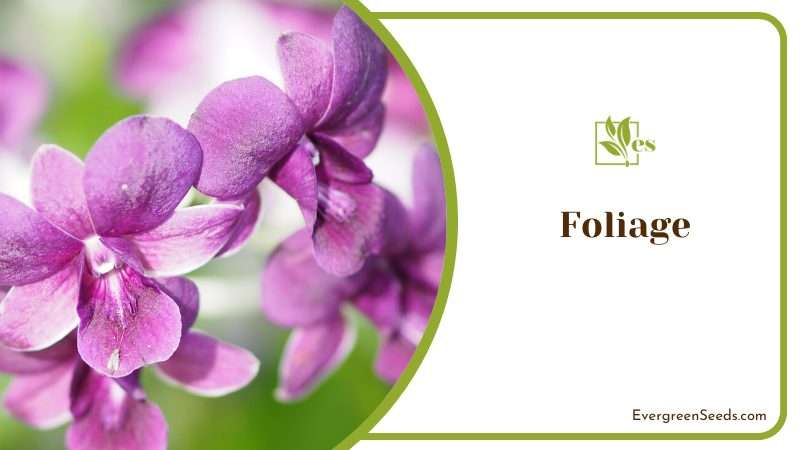
The canes store energy and nutrients, and new growth will sprout in some time.
– Flowers
Dendrobium Phalaenopsis produces massive inflorescences which bear large, showy flowers. The flowers can bloom twice a year in warm and tropical climates and once a year in cooler climates.
Flower spikes arise from the top of the canes. But some flower spikes emerge from below the canes as well. More canes mean more flower spikes and more flowers. The diameter of the flowers ranges between 1 and 3 inches. The color ranges from white to lilac and pink.
Older canes can produce blooms several times if cared for properly. In most cases, flowering occurs when a cane matures. Light is an important factor in reblooming this orchid. It has higher chances to rebloom when kept in bright light conditions.
– Roots
Dendrobium Phalaenopsis has a big root system. The roots are not too thick and flimsy. They are usually white and turn green when watered and if exposed to light. As a general rule, the bigger your orchid, the bigger its root system.
Dendrobium Phalaenopsis Care
Dendrobium Phalaenopsis is easy to grow if you keep in mind its basic growth requirements.
 Light Requirements
Light Requirements
Like the Vanda orchids, Dendrobium Phalaenopsis loves bright light. Try to provide direct sunlight if it is not too harsh. Exercise moderation, as they can burn in direct sunlight if they are not adjusted to it. If the leaves are heated up, make sure to provide your plant shade in the hottest parts of the day. Direct sunlight works well in the morning and late afternoon in hot climates.

You can grow them indoors in less than ideal lighting, but their appearance will show it. You will have fewer flower spikes and not as big and showy flowers. Look for a spot in your house that receives maximum light during the day. A south or east-facing window or a balcony are great options. Use sheer curtains to protect them from the afternoon sun. If you have a garden and an outdoor area, keep them outside in a tropical rainforest-like environment.
 Water Requirements
Water Requirements
Dendrobium Phalaenopsis loves to be watered abundantly during the growing season. When the plant is actively growing canes and flower spikes, it needs more water than usual. So do not hold back on watering at this time and water them thoroughly each time. However, do not keep them soggy all the time and allow them to go just a little bit dry. Water the plant when the medium starts to feel dry to touch.
If you live in a tropical climate and your orchid is mounted outside, you will have to water the plant multiple times a day during the summer season. When the plant is in bloom, you can cut back slightly on watering. When the canes or pseudobulbs start to become thin or shrivel, it means that the plant is starting to get dehydrated and it is time to water.
If the water in your area is hard, do not use the regular tap water. Use filtered RO water to avoid any salt buildup around the plant roots. If you want your orchid to rebloom, never let the plant go bone dry. Water the plant when the medium is almost dry.
 Soil Mix
Soil Mix
Dendrobium Phalaenopsis is an epiphytic orchid and likes an airy medium. So prepare a soil mix that is loose and well-draining. Do not pot them in the regular garden soil, as it will suffocate the roots. Use a well-ventilated potting medium that is suited for epiphytes.
You can use bark chips or coconut husk as the primary medium. Add perlite or charcoal for drainage. Sphagnum moss can be too fine for these orchids but if the air in your area is too dry, you can add sphagnum moss to the soil mix. You can also use leca to grow these orchids.
As the plant grows, its root system also gets bigger. Put them in small pots or containers initially, but as they grow, and especially when the plant takes over the entire pot, shift to a bigger pot. More than the size of the pot, focus on keeping the soil medium airy.
 Temperature
Temperature
Dendrobium Phalaenopsis is a warm to hot-growing orchid tolerating temperatures as high as 105 degrees Fahrenheit. It is a hot grower and does not enjoy cooler temperatures. It can tolerate heat better than other orchids such as Cattleyas and Vandas. So, if you live in a hot climate, you can grow them outside in the garden.
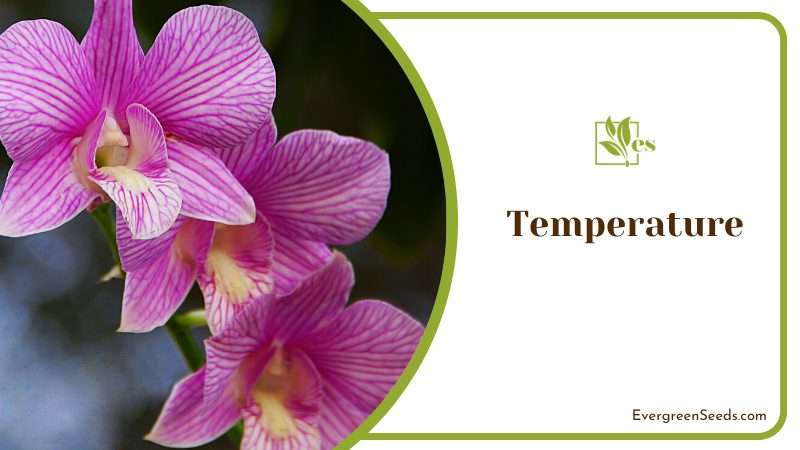
The more you keep them in warm temperatures with high watering frequency, the more your plant will produce flowers. With a hot climate, you have to be careful about the sunlight, as these plants will scorch in harsh sunlight.
Do not keep your orchid in temperatures lower than 60 degrees Fahrenheit. It can tolerate slightly lower temperatures but it would not be happy for long. Shift them inside if the winter gets too cold in your area. The ideal temperature for proper growth would be 65 to 68 degrees Fahrenheit at night and 75 to 80 degrees Fahrenheit during the day. A slight difference between the day and night temperatures helps in initiating flowering.
 Humidity
Humidity
Dendrobium Phalaenopsis is not fussy at all when it comes to humidity. Like most other orchids, it loves high humidity but it is quite tolerant to lower humidity levels and a humidity level above 50 percent in the house works fine for them. Maintain high humidity by keeping humidifiers and humidity trays around the plant. You can use tap water after you purify it.
 Fertilizer
Fertilizer
The more you feed these orchids in their growing season, the more they will bloom. Fertilize once a week with one-fourth to one-half of the recommended dose mentioned on a liquid orchid fertilizer. This orchid is a heavy feeder when it is growing. So do not hold back on fertilizing during the summertime. Apply good quality fertilizer during the growing season if you want to see bigger flowers.
Use a nitrogen-rich fertilizer during the growing season as new growth benefits from nitrogen. A good fertilizer regime will give you longer-lasting flowers and more flower spikes.
Repotting
Repot a Dendrobium Phalaenopsis only when the soil medium begins to decompose and new growth begins to appear, usually in early spring. Otherwise, resist repotting this orchid and keep it in a small pot. The plant does not grow well in an old soil medium, so keep an eye on it. If it seems broken and decomposed, immediately change the soil mix.
To prepare fresh soil mix, use fir bark chips and perlite. Add sphagnum moss if the air is dry in your area. More moss means less frequent watering. Repotting may be required every two to three years, depending on the soil medium and plant’s condition.
Problems
– Pests
Dendrobium Phalaenopsis leaves are a magnet for pests. If a leaf is under pest attack, most probably that leaf will fall. But it is fine, as the plant is quite resistant. Just cut the infected leaves and wait for new leaves to grow.
– Crown Rot
These orchids do not suffer too much from crown rot. But like other sympodial orchids, when new growth is developing, do not put water in it as new growth is prone to rot.

Water does not evaporate fast from this area. So, remember to water from the base of the plant.
Final note:
We have listed below all the necessary points you need to keep in mind before growing this beautiful orchid.
Dendrobium Phalaenopsis is a versatile orchid. It can be grown in your living room or the garden. They are not fussy orchids and you should try your hands in growing one of these beautiful types of Dendrobium orchids!


